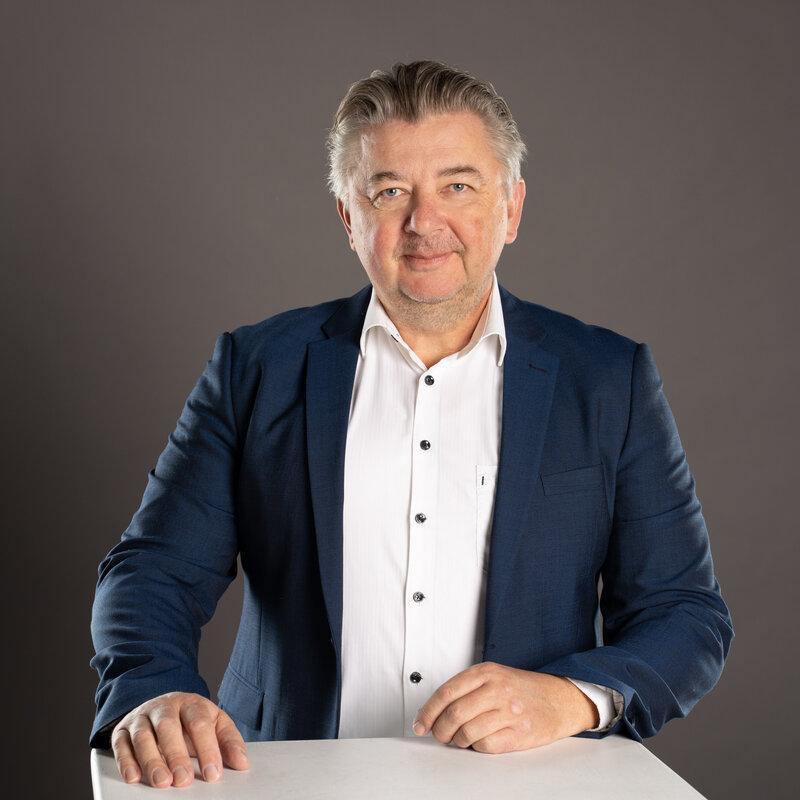The EMBA alumnus fighting a growing environmental catastrophe using collaboration, technology, and the power of kelp
A race against plastic
The world is in a “plastics crisis”, said the United Nations when it sounded the alarm in June of this year. While plastic pollution is a topic many of us are familiar with, the growing danger that such pollution creates is inescapable. This hazardous material seeps into every aspect of life on Earth, from human health to wildlife and our oceans. Microplastics are found in food, water, and the air, with pollution in marine and freshwater environments expected to triple by 2040 (UN, 2025).
It's a damning picture of the state of our planet. None more so than the Great Pacific Garbage Patch—a growing and devastating reminder of the increasing damage inflicted upon our ecosystems. It was this marine debris that shocked EMBA alumnus Jürgen Roider into action back in 2018, and it served as the catalyst for his company, the Ocean Robotics Project. “I was sailing past uninhabited islands in the Caribbean at the time and was shocked by how much pollution we came across. It was incredibly sad to be in such a beautiful place, but instead all we found was plastic and waste.”
Galvanizing a global movement
Spurred on by this sense of helplessness, Jürgen began by planning what would be needed to start “cleaning” the ocean. “Only 0.5% of plastic pollution is on the surface of the ocean, while the rest is found at its depths. To start the cleanup under these deep-sea conditions, we calculated that we would need around 800 submarines—we didn’t have the money. Instead, we decided to focus on what was possible.”
Jürgen and his team began by building a global community of like-minded people as passionate about reducing pollution as he was. The focus was on rivers and areas that flow into the sea, where plastic is likely to drift into larger ecosystems. Projects began as field-based environmental initiatives in Cuba, South Africa, and India, utilizing robotics and drones, before transitioning to larger-scale approaches such as carbon capture and offshore ocean farming in Africa and Australia. Here, forming agreements with other countries and their governments, or working with local NGOs, is key to mobilizing global collaboration. “It’s important to have as many people involved as possible: cleaning the ocean is a task for mankind, not just for one company.”
Innovation for everyone
A self-prescribed serial entrepreneur, the Ocean Robotics Project is Jürgen’s fifth business venture. “Being an entrepreneur is important to me as it offers the freedom to realize my dreams. I chase complex problems that seem unsolvable, from plastic pollution to climate change, but that is what challenges me and drives me forward.”
This sense of responsibility for the world around him is clear, as the Ocean Robotics Project has a wider reaching impact. Beyond cleaning plastic from waterways, it creates work and more sustainable ways of living for local communities. Along the coastlines of Namibia and South Africa, people are needed to help plant and harvest kelp farms, providing education and training to achieve self-sufficiency. “The work can be taught in just a few days,” explains Jürgen, “so it offers a source of income and a livelihood.”
He adds that a large part of this way of thinking was a result of his time in the EMBA. “The Kellogg-WHU Executive MBA played a large part in my decision to become an entrepreneur. I was inspired by former WHU professor Peter Witt, who advised us to focus on the product, not the service; the market will indicate the direction to take. Learning the practical side of entrepreneurship, like making a pitch or how to formulate your idea in just a few minutes, is just as important as the theory.”
Changing with the times
With active projects in Africa, Australia, and India, the Ocean Robotics Project is clear about its direction, focusing on debris cleanup and water pollution, and is currently working on filtering microplastics by planting giant kelp forests. “The pilot project in Namibia with underwater kelp forests will absorb around 100,000 tons of carbon dioxide per year in 2026, and for the roll-out, we will plant 50 million kelp trees just in Namibia. They can be used to produce biochar, an organic material that can be utilized as a source of green energy or as a fertilizer to help grow food for the same communities in Africa.
“Our vision for the future and to stop climate change is to build a belt of kelp around Antarctica with a billion trees of kelp offshore. Once the kelp has reached its maximum size of approximately 45 meters, it will be disconnected from the ocean farm and sunk to a required depth of around 3000 meters for long-term CO2 storage. Drones will ‘reload’ the empty spots with young kelp trees, and the cycle starts again. This belt could also filter a significant part of the microplastics out of the oceans, since microplastics stick to the surface of kelp.”
As the Ocean Robotics Project grows and evolves, so do its efforts in all areas of climate change and pollution, with a shift in attention to the desalination of seawater. Here, the goal is to use as little energy as possible to provide high-quality drinking water. Operating across continents and with further projects planned in the Philippines and the Arabian Peninsula, the Ocean Robotics Project is only just beginning, with much work still to be done. “I know so many people around the globe now who are desperate to find solutions for the planet. This gives me hope that we find a way out of the problems we now face.”

